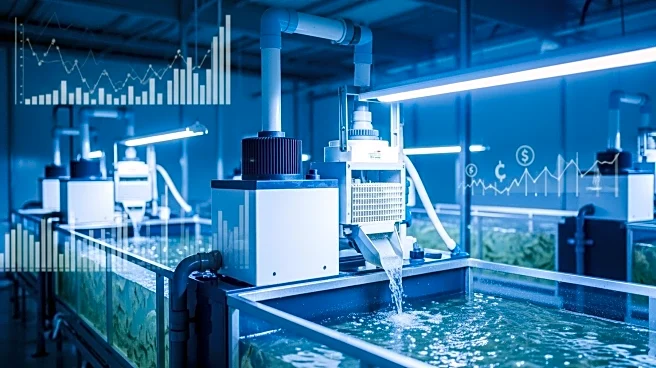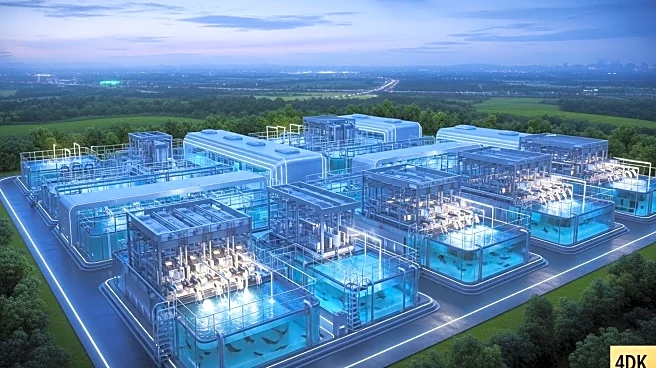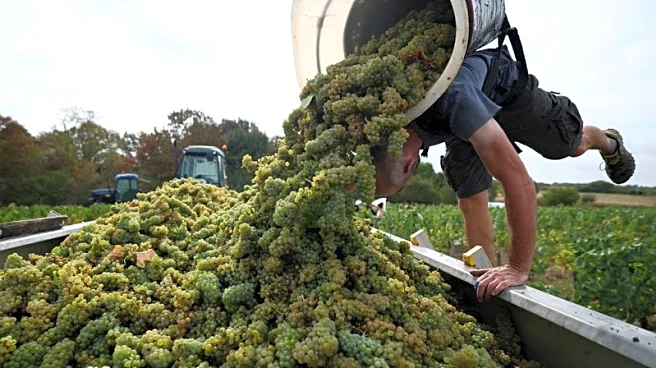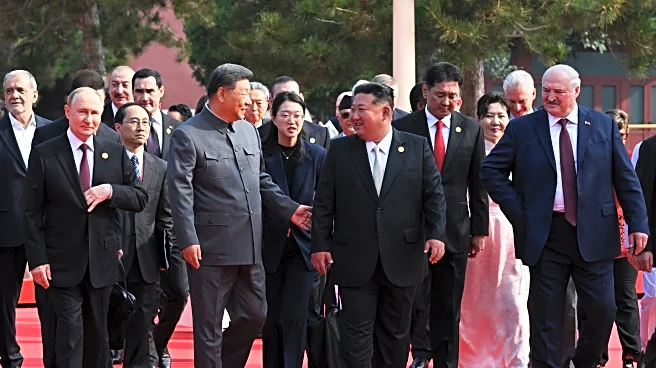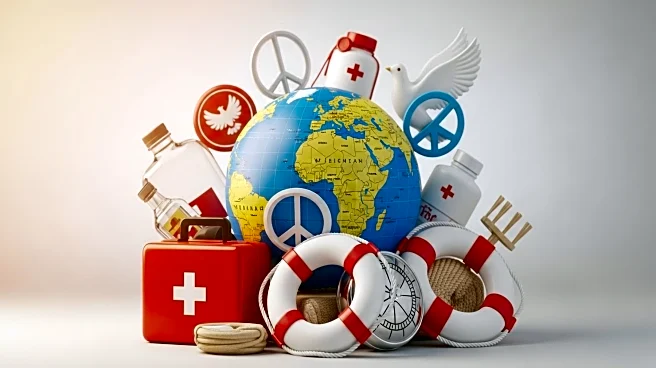What's Happening?
Atarraya, a high-tech shrimp farming company, has launched a new facility in Plainfield, New Jersey, utilizing innovative IKEA-style flat-packed containers. These containers significantly reduce capital expenditure costs by 70% per ton and are easier to transport compared to traditional methods. The move comes as the U.S. faces hefty import duties on shrimp from countries like India, Ecuador, Vietnam, and Indonesia, prompting increased interest in domestic shrimp farming solutions. Atarraya's founder, Daniel Russek, highlights the benefits of their biofloc process, which uses a microbial community to manage the nitrogen cycle, converting ammonia into nitrite and nitrate, which is then used as organic fertilizer. This system allows for efficient shrimp farming without the need for highly skilled labor, as operations are guided by software.
Why It's Important?
The introduction of Atarraya's cost-effective shrimp farming technology is significant in the context of rising import tariffs, which have made foreign shrimp more expensive. By providing a competitive domestic alternative, Atarraya could potentially reduce the U.S. reliance on imported shrimp, benefiting local economies and reducing environmental impacts associated with traditional coastal shrimp farming. The technology also offers a sustainable solution by minimizing pollution and the destruction of natural habitats, addressing ethical concerns such as slave labor and environmental degradation. This innovation could lead to a shift in the shrimp industry, promoting more sustainable practices and potentially influencing global shrimp farming standards.
What's Next?
Atarraya plans to expand its operations by setting up additional facilities, including a potential joint venture in the United Arab Emirates. The company aims to reach mainstream markets beyond fine dining restaurants, targeting corporate catering and large foodservice operators. As the technology becomes more widespread, Atarraya may establish hatcheries to support its farms, further reducing costs and increasing production efficiency. The success of this model could encourage other companies to adopt similar sustainable practices, potentially leading to broader changes in the aquaculture industry.
